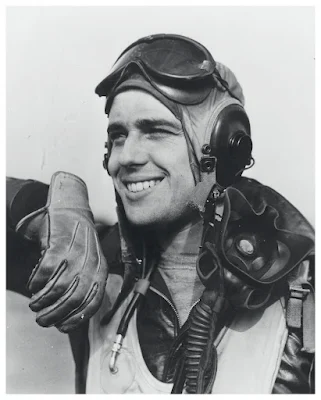by David D. Howell
Prior to World War II, British Airways Ltd. had established a regular air route between Great Britain, Norway, Sweden and Finland. When Russia and Finland engaged in war the route had to be shortened. World War II brought another change. The air route continued but, in a stunning military operation, Germany suddenly and dramatically invaded Denmark and Norway.
On that day, 9 April 1940, one British aircraft was lost at Oslo while the aircraft at Stockholm escaped by a devious route into Sweden and then home. Thus the Norway connection was severed. This also marked the end of regular air service between Great Britain and Sweden. It was just not practical to continue.
Then came the British response to the German invasion. Before the end of 1940, nine special flights were made between Perth and Stockholm. The aircraft flew through the "complete" German blockade of Great Britain.
Amazingly, mail was apparently smuggled from both Norway and Finland to Sweden for air transport via the British civil air carrier.
Examples of air mail to and from the three Scandinavian countries and Great Britain are known. Most common is mail to or from Sweden and Great Britain. Mail from Finland is scarce but mail from Norway is rare. (Mails passing through Germany or transported via sea to or from Great Britain are not considered in this article.)
Wartime priorities helped determine the make-up of the cargos transported by the civil air carriers. Britain wished to influence Sweden and this could only be accomplished through the media of newspapers, magazines and personal communications. Britain wanted Sweden to know that Britain was still in the war, counteract Nazi propaganda and, not in the least, obtain the fine ball-bearings produced in Sweden. Ball-bearings were essential to the war effort. It also developed that diplomats and company officials would also have to be transported into and out of Sweden.
All flights were under the jurisdiction and by the direction of the Air Ministry. The established air terminals became Leuchars, Scotland, and Stockholm, Sweden (the airfield at Bromma).
British Overseas Airways began the 1941 flights with one aircraft. Norwegian air crews, appointed by their government, did much of the flying in 1942 and 1943. By 1944 and 1945 the British flew somewhat more openly although some aircraft and crews had been lost to enemy action. Even the fast aircraft, Mosquito, was subject to being shot down by the German fighter aircraft. All air routes flown were secret as to actual time, speed, altitude and course of flight.
In regards to the air mail, the dates of the flights and an estimate of the amount of mail carried need be researched. Also, little is known about the following: censorship, POW mail, postal cachets, delayed mail, meanings of certain markings on mail, "closed-bag" or "open-bag" mail, postal rates and administrative postal affairs.
Air Mail Rates to Sweden
30 October 1939 to 17 March 1942: Letter 5d. | Postcard 2½.d
18 March 1942 to 30 March 1943: Letter 1/3d. | Postcard 7d.
31 March 1943 to 13 February 1945: Letter 8d. | Postcard 4d.
From 14 February 1945: Letter 5d. | Postcard 2½.d
de Havilland Mosquitoes used by BOAC
DK292: The first Mosquito to fly the Leuchars – Stockholm route
DZ411: G-AGFV damaged at Stockholm ASI unserviceable swung off runway and undercarriage collapsed. Repaired. 04/07/1944. Flew to 1945
HJ667: G-AGKO flew to 1945
HJ680: G-AGGC flew to 1946
HJ681: G-AGGD crash landed Sweden 1941
HJ718: G-AGGE flew to 1945
HJ720: G-AGGF crashed Invernairk 1943
HJ721: G-AGGG crashed near to Leuchars 1943
HJ723: G-AGGH flew to 1945
LR296: G-AGKP Took off on a return Cargo flight to RAF Leuchars. 19/08/1944. Crashed into the North Sea 5 miles off Scottish coast near RAF Leuchars, Fife, inbound from Stockholm. Crew: F/Lt (71751) Gilbert RAE OBE (pilot) BOAC /RAFO - killed; R/O Donald Trevor ROBERTS (nav.) BOAC - killed; Capt. Bernard William Basil ORTON (pass.) BOAC - killed
HJ792: G-AGKR lost at sea 1944
HJ898: Crew trainer retained RAF serial flew to 1945
HJ985: Crew trainer retained RAF serial returned to RAF 1944
LR524: Crew trainer retained RAF serial returned to RAF 1944
References
Personal collection of covers.
Publications of HMSO, especially: Merchant Airmen: The Air Ministry Account of British Civil Aviation, 1939-1944. London: His Majesty's Stationery Office, 1946.
 |
| De Havilland DH.98 Mosquito FB.VI (G-AGGD), BOAC, Leuchars, 1943. |
 |
| DH98 Mosquito G-AGFV (DZ411) Mk IV BOAC on 8 January 1943. |
 |
| A passenger traveling in the bomb bay of a de Havilland Mosquito of BOAC, on the fast freight service between Leuchars, Fife and Stockholm, Sweden. |
 |
| The crew of a BOAC de Havilland Mosquito confer with RAF flying control officers at Leuchars, Fife, before starting a night flight to Stockholm Sweden. |
 |
| Civilianized Mosquito FB Mark VI, G-AGGD (formerly HJ681), of British Overseas Airways Corporation, landing at Leuchars. |
 |
| Slough to Hagalund, Sweden, November 30, 1939. 5d. air mail rate + 3d. registration fee. |
 |
| London to Huskavana, Sweden, May 21, 1940. The air mail rate was 5d. for the first ounce and 3d. for each additional ounce. 8d. two ounce air mail letter rate. |
 |
| London to Kilafors, Sweden, April 30, 1942. 1/3d. air mail letter rate. "Swedish Permit No. B*1206" typed at the top of the envelope. |
 |
| Teatherhead to Stockholm, Sweden, January 2, 1943. 7d. air mail rate. |
 |
| Aldershot to Stockholm, Sweden, May 15, 1943. 8d. air mail rate. |
 |
| Manchester to Gothenburg, Sweden, November 27, 1944. 8d. air mail rate. Shortpaid 3d. Swedish Tax : 60 ore. |
 |
| Birkenhead to Stockholm, November 16, 1943. 8d. air mail rate. "PBL" perfin : Price Bronborouh Limited. |
 |
| London to Stockholm, May 30, 1945. 5d. air mail rate. |

































